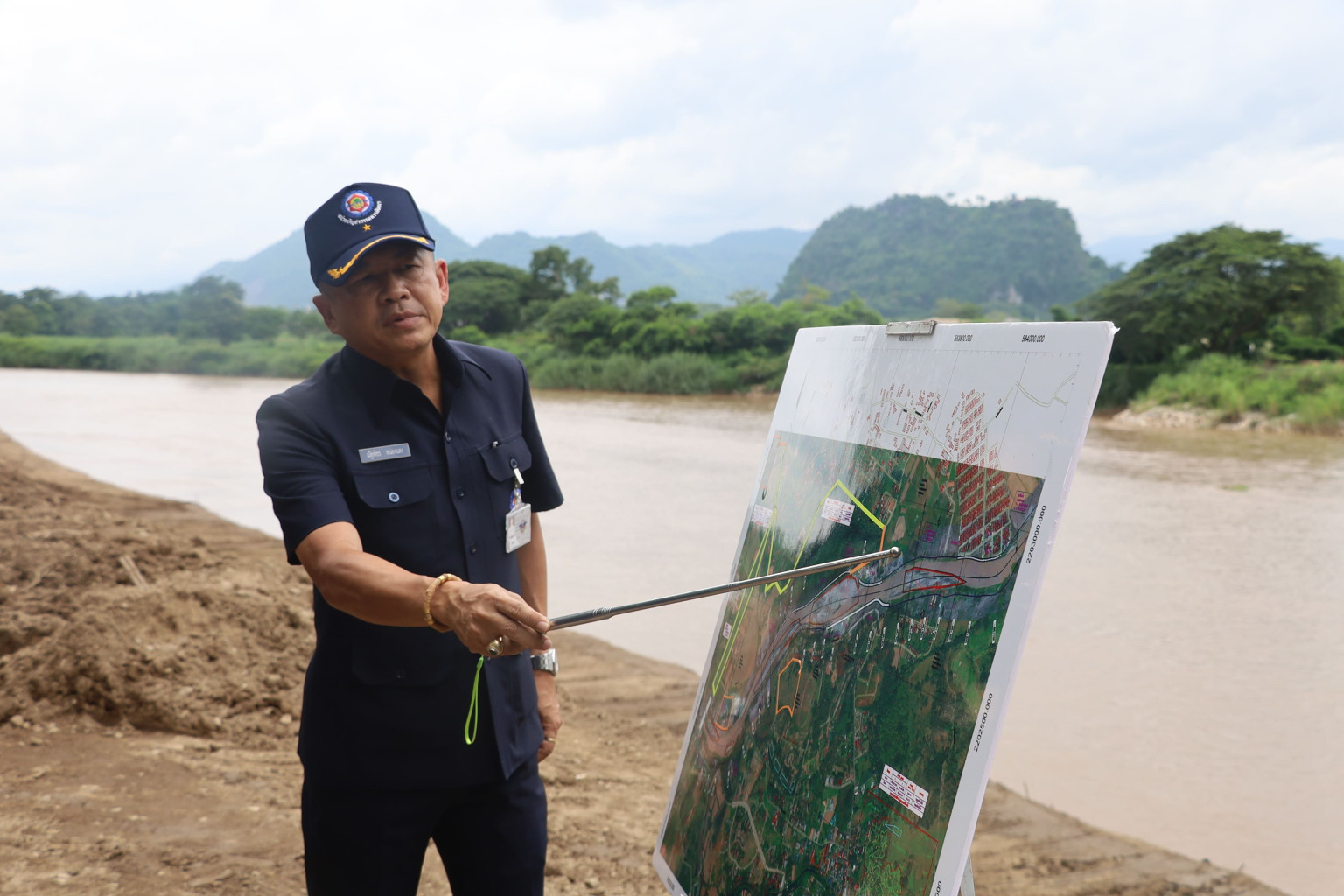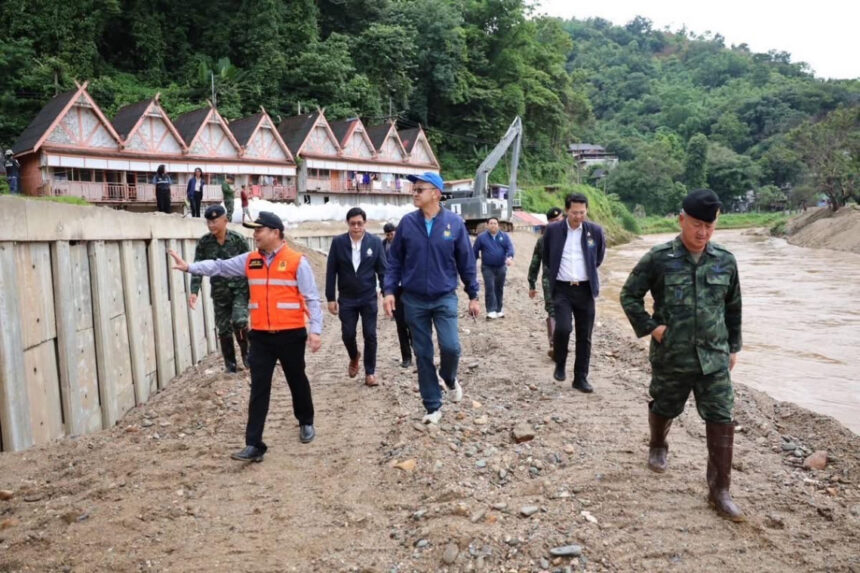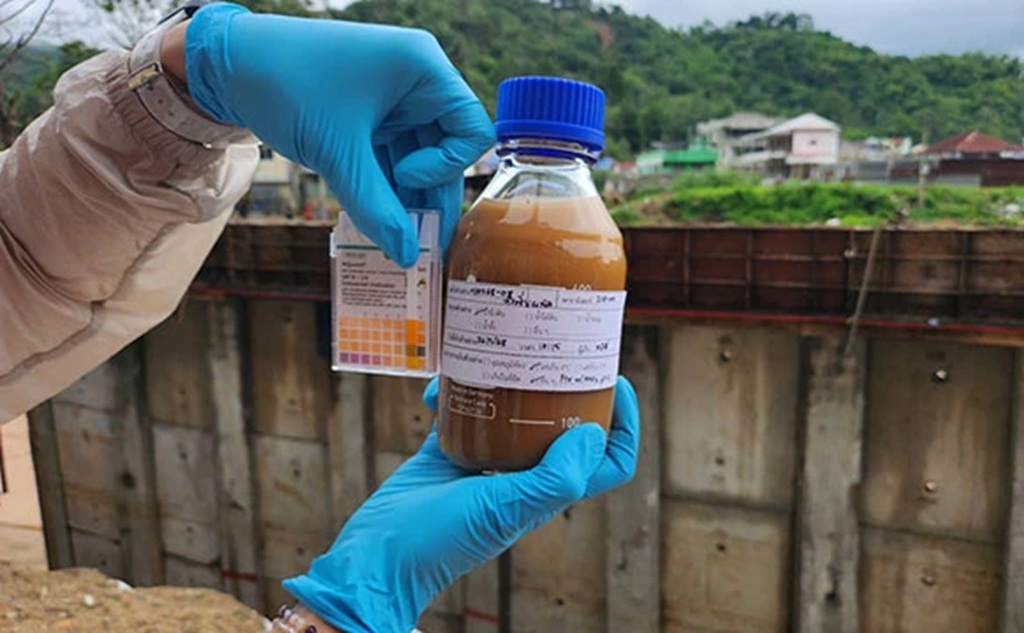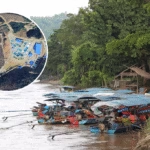CHIANG RAI – On Sunday, Dr Surasee Kittimonthon, Secretary-General of the National Water Resources Office (NWRO), visited Chiang Rai to monitor progress on flood prevention and water quality management in the Upper Mekong Basin.
He praised Chiang Rai’s readiness for the upcoming rainy season and shared plans to position the province as a national pilot for water management.
During the third meeting of the local water management committee for flood-prone areas in the Upper Mekong Basin, held at Phayaphiphak Conference Room in Chiang Rai’s city hall, Dr Surasee listened to updates from Mr Charin Thongsuk, Chiang Rai’s governor, and other agencies on their preparations.
Dr Surasee noted that Chiang Rai has made strong preparations for the rainy season, especially with its early warning systems in local communities. These systems will help residents get important alerts quickly. He also highlighted their good readiness with equipment and machinery.
He expressed his appreciation for the work done in Chiang Rai, especially on setting up warning systems in risk areas to help people access information faster.

Still Chances of Overflow
Dr Surasee added that the NWRO will work with government agencies and officials to review the idea of making Chiang Rai a pilot province for water management, both for prevention and practical action.
However, he mentioned that Chiang Rai still needs more mud suction machines, and the NWRO will consider this request.
He said there is a chance that water could overflow across the First Thai-Myanmar Friendship Bridge. Plans are in place to strengthen flood defences, including building a temporary wall along over 200 metres of the Sai River.
Big Bags have been prepared for emergencies, along with an alert system and surveillance during the rainy season.
Lt Gen Sirapop Supawanich, Chief of the Royal Thai Army Engineers, shared that work on the protective barrier is moving forward as expected and should be finished by 15 July 2025. Teams and resources are on standby to monitor the situation closely, so people in the area can feel safe and live comfortably, according to army policy.
After the meeting and site briefing, the National Water Resources Office team took a boat to inspect both temporary and semi-permanent barriers along the Sai River. They also checked local water quality monitoring points in Mae Sai.
The group then continued to risk areas in Koh Chang Subdistrict, Mae Sai District, focusing on spots where embankments have failed and where a rural road has sunk. These visits help local agencies work together to assess risks and quickly find solutions.
Dr Surasee and his team also checked the progress of dredging the Kok River near Chiang Rai Beach in Mueang district and looked at water quality concerns in the area.
Chiang Rai, Sai River and Kok River Inspections
Also on Saturday, the Department of Fisheries is stepping up efforts to monitor and check for contaminants in aquatic animals due to cross-border pollution in the Sai and Kok rivers.
The number of inspection sites has increased to 22, now covering high-risk areas in Chiang Mai and Chiang Rai. Sampling takes place every two weeks to help assess the health of local fish and to help keep food safe for the public.
Mrs Thitiporn Loprasit, Deputy Director-General of the Department of Fisheries, shared that pollution in the Sai and Kok rivers has been a long-standing issue. Concerns have grown over chemical contamination that could harm the environment, aquatic life and public health. Photos of catfish with red spots have caused alarm and led to less confidence in local fish.
Mr Buncha Sukkhaew, Director-General of the Department, ordered more frequent checks and a wider monitoring network, expanding from 4 to 22 sites across Chiang Mai and Chiang Rai.
During a recent survey on 14-15 June 2025, the team collected samples from 12 species in six locations in Chiang Rai.
These included Chiang Rai Weir, Kok River, Doi Hang District (above the weir), Kok River Bridge, Wat Suntat, and two points along the Mekong in Chiang Saen. Most fish appeared healthy, except for two small catfish out of 28 sampled (about 7.14 percent), which showed red lumps on their skin.
The Department has made checks for contamination stricter at all 22 sites along the Sai and Kok rivers.
Lab results using high-powered microscopes found transparent leech parasites on some fins, and liver flukes in the red lumps. The Department noted that the catfish are known carriers of these parasites.
Mrs Thitiporn added that local fishers confirmed they have seen these red lumps in small catfish for years, yet they still eat their catch as usual. After learning more from the Department, they felt more confident eating local fish.
“Liver flukes in fish are a natural occurrence and can be killed through proper cooking, making them safe to eat,” Mrs Thitiporn stressed. The Department will continue to closely follow the situation and work with other agencies to monitor fish health and contamination.
They will keep the public updated with clear and accurate information to maintain trust and food safety for everyone.















